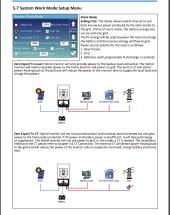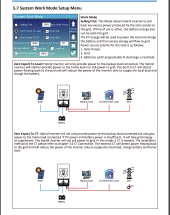Hi Everyone,
I got a Growatt SPF 5000ES + 9x540w panels + Lifepo4 48v 280ah pack powering the house with the help of the grid.
Exporting to grid is not allowed where I live so the current setup is very simple,
1. Grid is connected to AC in of Growatt
2. House is connected to AC out of Growatt.
PV charges the batteries and supplies the power requirements of the house in the daytime. Growatt uses the battery to supply power in the nighttime. SBU priority.
Now I have been thinking about replacing the Growatt SPF5000ES with Deye 5KW because of the longer warranty and IP65. Working mode needs to stay exactly the same of Growatt.
So to make The Deye work like the Growatt, Should I,
1. Connect the grid to AC in of Deye
2. Connect house load to AC out(Backup load in the image below) of Deye
3. Set the mode to "Zero export to load"?

From what I understand I can use Zero Export to CT as well but this mode is complicated. All I want is SBU priority just like MPP solar/Growatt inverters and not sell back to grid at all.
Please help me understand what setting to use for this purpose.
I got a Growatt SPF 5000ES + 9x540w panels + Lifepo4 48v 280ah pack powering the house with the help of the grid.
Exporting to grid is not allowed where I live so the current setup is very simple,
1. Grid is connected to AC in of Growatt
2. House is connected to AC out of Growatt.
PV charges the batteries and supplies the power requirements of the house in the daytime. Growatt uses the battery to supply power in the nighttime. SBU priority.
Now I have been thinking about replacing the Growatt SPF5000ES with Deye 5KW because of the longer warranty and IP65. Working mode needs to stay exactly the same of Growatt.
So to make The Deye work like the Growatt, Should I,
1. Connect the grid to AC in of Deye
2. Connect house load to AC out(Backup load in the image below) of Deye
3. Set the mode to "Zero export to load"?

From what I understand I can use Zero Export to CT as well but this mode is complicated. All I want is SBU priority just like MPP solar/Growatt inverters and not sell back to grid at all.
Please help me understand what setting to use for this purpose.



